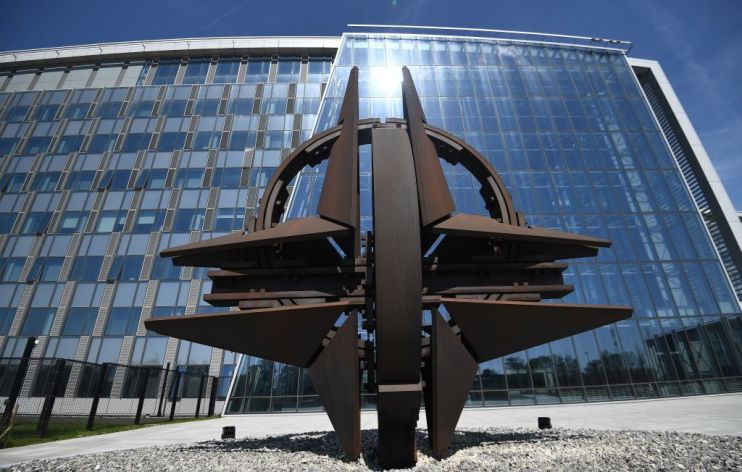Nato members must invest in integrated defence — now

The world has not stood idly by while the Brexit drama has played out these past few years.
Now that it is blessedly ending, London must catch up on what it has been missing in the strategic world.
Imagine the following scenario. Citizens of a small eastern European nation within Nato awake to find that the electric grid is down. Likewise, at the same time, cell and internet connectivity are sporadic, and even non-existent.
Gas and oil flow via east-to-west pipelines has ceased. Civil airliners are turning back, unable to land for lack of GPS. Gunfire erupts outside major cities from well-armed ground forces in indiscriminate uniforms. Chaos reigns.
At the same time, a large country to the east is mobilising forces along the shared border.
As the Alliance begins to respond to this unconventional attack and the Nato ally’s desperate plea for assistance, basic questions remain.
What did we miss and why? How will reliable data be gathered and turned into actionable information during this crisis? How do varying capabilities rapidly react to a fast-changing battlespace across land, air, sea, space, and cyber?
If these questions are not answered, in our obvious unpreparedness, the US and its European allies could quite possibly lose such a conflict.
The good news is that several Nato countries are currently embarked on significant projects to meet this overlooked challenge. However, they are moving at dramatically varying speeds.
While all agree that integrating defensive systems is the important next step, it is one that is evolutionary, not revolutionary, in nature. The bad news is the sense of urgency required to advance necessary changes is not always shared equally among Alliance members, with far too many continuing to take a holiday from history.
That needs to change.
Last year, US Air Force chief of staff, General Dave Goldfein, explained his service’s view of so-called multi-domain operations: “Victory in future combat will depend less on individual capabilities and more on the integrated strengths of a connected network available for coalition leaders to employ.”
In America, Goldfein’s vision is becoming reality. There is now a combined effort across the US Department of Defense to ensure that warfighters are interconnected to weapon systems in the air, sea, space, land, and digital realms.
One example is the US Army’s development of Integrated Air and Missile Defense Battle Command System (IBCS) that will integrate current and future air and missile defence weapons and systems. Following suit in Europe, Poland has recently acquired IBCS, making it the first Nato-allied country to do so.
Going beyond this, Nato is asking industry how private investment can help ensure interoperability among allied fighters, tankers, and airborne intelligence, surveillance, and reconnaissance platforms, as it grapples with the advent of multi-domain operations, which are the future of warfare.
While Nato’s defence planning process can serve as a mechanism for establishing common ground on integrating defensive systems, national approaches still profoundly differ. Despite general agreement in favour of a more integral approach, the existing culture, stove-piping, and established interests work against the sense of urgency needed to speed things along.
There is also disagreement on the diversity and speed of acquisition and the level of ambition — how much for what level, and how long to plan for.
But the development of this Alliance-wide, joined-up way of warfare is paramount. Nato and the EU must both expand their efforts to explore these systems. Britain, still linked strategically to Europe even as it deepens long-established ties with the US, has a critical role to play in this process.
Everyone acknowledges that forces, capabilities and budgets are limited, making real strategic vision essential. Developing an open architecture that ties forces and capabilities together across all domains will allow Nato to stay ahead of the strategic curve.
Think back to the all-too-plausible scenario described above. Thankfully, at present, it remains just a fiction. However, for places like the Baltic states and Poland, the fear of such an attack is presently all too real. It is here today.
Failure by Nato and European allies to properly invest in and deploy the systems necessary to fight these new battles could prove disastrous.
Main image credit: Getty